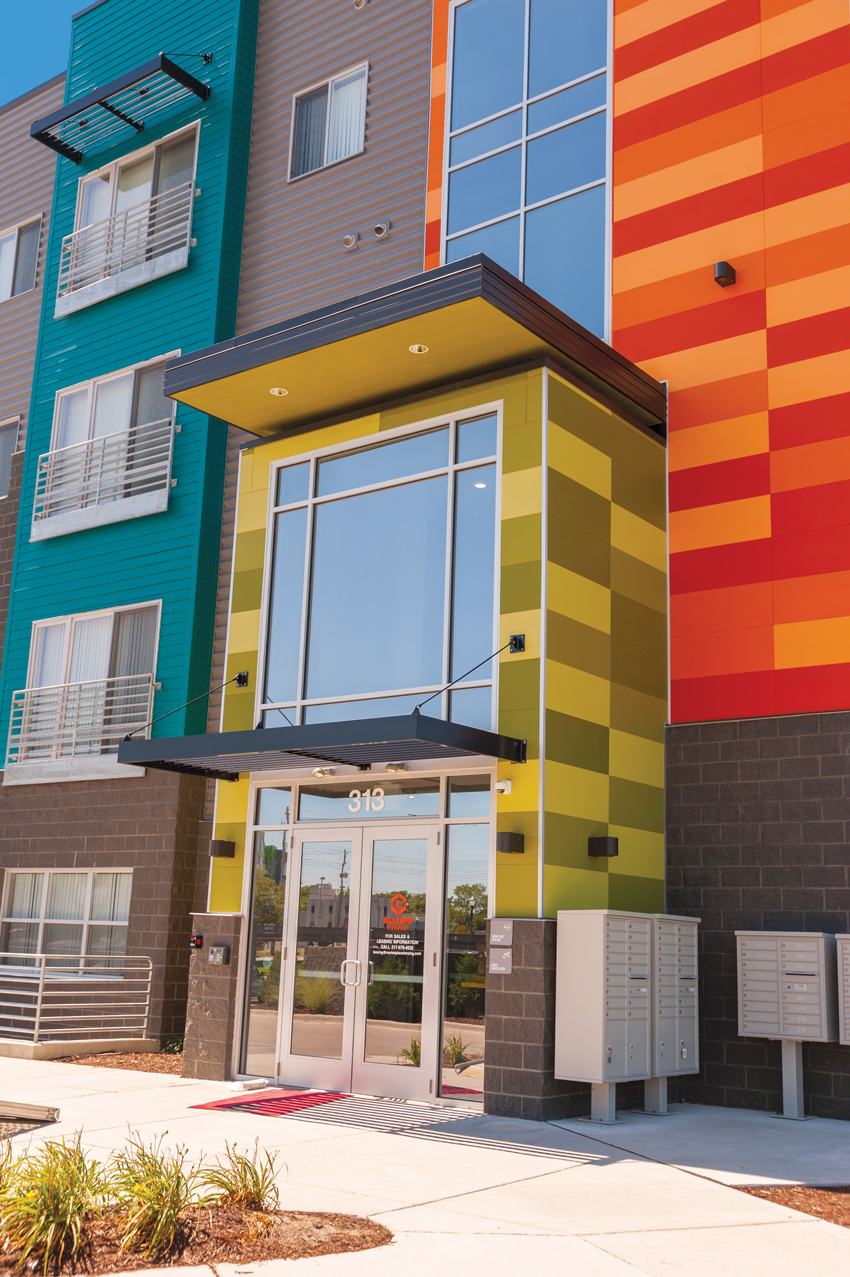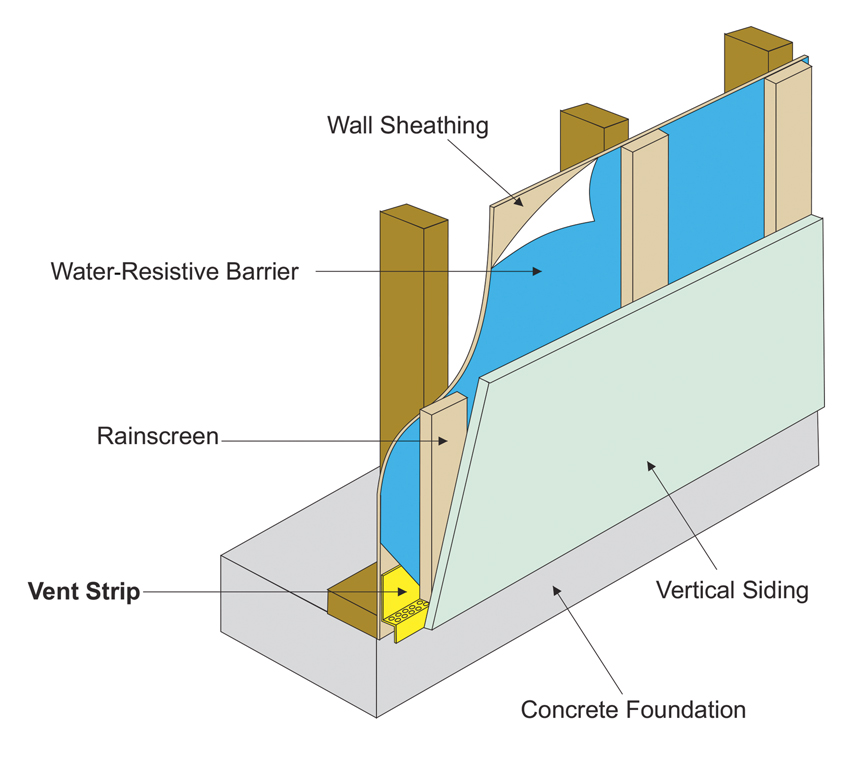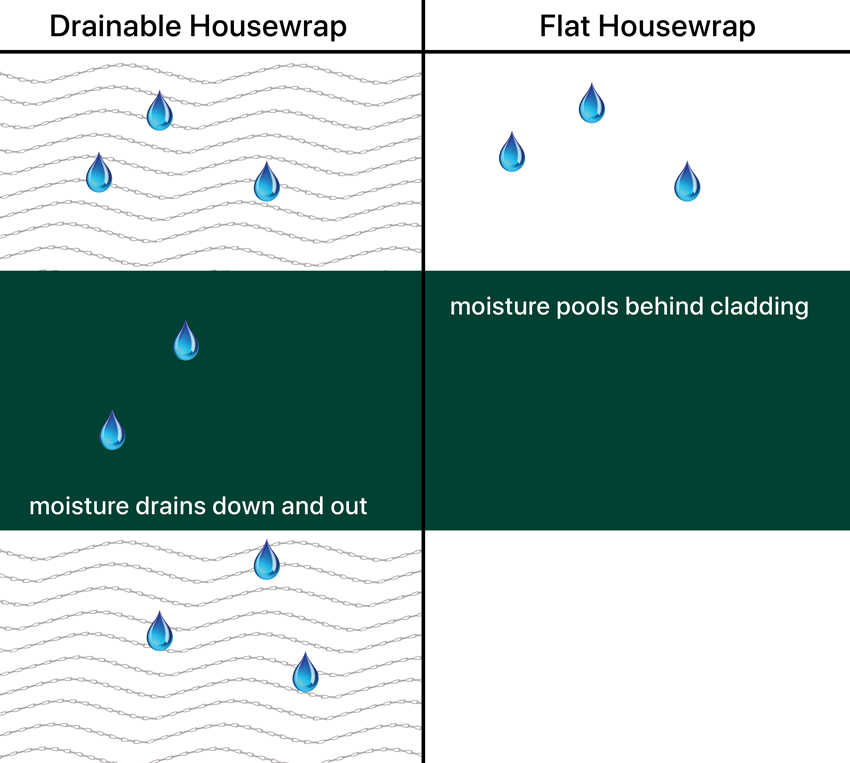Future Trends for Multifamily Housing Exteriors
Learning Objectives:
- Describe how the increased emphasis on tightening buildings has magnified the importance of moisture management, which has led to an increase in the use of drainable weather-resistive barriers (WRBs) and new steps in the creation of rainscreens.
- Identify standards for rainscreens, and explain how these moisture management strategies create new options for the designers to consider innovative reveals and metal trim in multifamily housing units.
- Discuss how reveals and metal trim give new refinement and detail to common and traditional siding materials, such as wood, lap sidings, composites, and others.
- Describe new shapes and finishes for metal trims and reveals, and how these add interest to exteriors.
Credits:
This course is approved as a Structured Course
This course can be self-reported to the AANB, as per their CE Guidelines
Approved for structured learning
Approved for Core Learning
This course can be self-reported to the NLAA
Course may qualify for Learning Hours with NWTAA
Course eligible for OAA Learning Hours
This course is approved as a core course
This course can be self-reported for Learning Units to the Architectural Institute of British Columbia
What type of housing is most needed in the United States? As the push toward urbanization in the country continues a decades-long trend, multifamily developments are perhaps the most necessary. According to the U.S. Census Bureau, urban areas now account for 80.7 percent of the U.S. population, and the growth rate for these areas is 12.1 percent, compared to a 9.7 percent growth rate for the country as a whole.1 The movement is likely to continue as members of the millennial generation (born between the 1980s and mid- to late 1990s) leave small towns and move to urban areas. A National Public Radio story titled “Millennials Continue Urbanization of America, Leaving Small Towns” emphasizes that the millennial generation prefers the opportunities, excitement, and walkability of urban areas.2 Density itself is also a draw. In fact, to slow down the small-town population drain, the Federal Reserve suggests increasing the density in small towns to make them more desirable to younger generations.3 The Federal Reserve is a central bank system that includes the Board of Governors in Washington, D.C., and 12 independent regional Reserve banks. They call their strategy “a small-town approach to new urbanism.”

All images courtesy of TAMLYN
This multifamily housing development that is durable and aesthetically appealing relies on superior moisture management for the building envelope, as well as innovative extruded aluminum trim and reveal pieces.
As a consequence of urban growth and the need for housing density, the design and construction of multifamily housing units are more important than ever. The new units developed in growing urban and even suburban and small-town areas must be both high performing and high style. Innovations in building materials make both increased function and form possible, from highly engineered drainage planes to durable and stylish exterior trim and reveal pieces that bring a chic modernism to multifamily projects.
But before discussing form, let’s start with the basic necessity for superior function: keeping the building envelope drained and dry.
Trapped Moisture Is the Enemy of Building Envelopes
As most building professionals know, water is the most significant factor in the premature deterioration of buildings, and proper steps should always be taken to protect the envelope.
One hundred years ago, “leaky” buildings with few strategies to prevent air and water intrusion were perfectly adequate. Exterior materials were applied shingle style to shed rainwater and block wind, and that was that. While these buildings might not have provided the consistent comfort we have come to expect, the buildings were able to become wet and then dry out, get wet and dry out, in continuous cycles. Wood materials, for example, expanded and contracted with the weather, and little harm was done.
Then came air-conditioning, the oil embargo in the 1970s, and increasing awareness that the burning of fossil fuels was harming our environment. It became clear that the energy used for the comfort of air-conditioning and heating would need to be lessened by the tightening up of buildings. The architecture, construction, and manufacturing industries became leaders in this movement.
This quest to make homes more energy efficient brought about a new set of challenges. The moisture that once entered the envelopes of buildings and then dried out quickly and naturally was no longer doing so. That process was impeded by the introduction of sheathing, housewraps, increased insulation, non-vapor-permeable interior wall coverings, and other modern materials and methods. Moisture problems multiplied. But the problems were not solved immediately.
A combination of temperate climates and minimal building codes contributed to the delayed resolution of moisture problems. But as extreme weather has become more common—and the negative impacts of water intrusion become more widely known—designers, developers, owners, and builders can no longer afford to slough off moisture management concerns.
Over time, the collective industries that make up the built environment faced the challenge with ever more sophisticated products and strategies. A growing body of building products and systems are now available that make it easier to properly manage moisture. Sorting them out has become a new challenge.

The original rainscreen assemblies involved furring strips attached over the water-resistive barrier (WRB) to create the necessary capillary gap for moisture to drain down and out of the envelope.
How Rainscreens and Drainage Wraps Mitigate Moisture Problems
Lack of moisture management has become the leading cause of exterior wall system damage to buildings. Lack of adequate drainage in the wall system can lead to issues as “simple” as paint/stain failure to more difficult-to-remedy problems such as mold, breakdown of the wall materials, and damage to the structural components of walls and floors.
Having an adequate drainage plane design, the right products, and correct installation all help to remove water in walls of structures. This has become essential and, in some instances, required by code. Consulting firms that specialize in enclosure performance recognize that effective drainage is a key factor of good building design.
Some building science experts believe that the best protection against moisture is a new generation of housewrap called drainable housewraps. As the name implies, drainable wraps incorporate both a water-resistive layer and a drainage gap, created by spacers, that helps water drain from behind the cladding at a faster rate.
Nonwoven and woven are two different methods of producing the primary fabric material used in a housewrap. Woven material has crossing “threads,” while nonwoven is made more like a paper manufacturing process. The key difference is the method by which the vapor permeability is achieved in the two types. Most woven products tend to require micro-perforations to allow vapor permeability, while nonwovens do not. Micro-perforations can decrease the water resistance of a housewrap.
Current building science research indicates that the ideal vapor-permeability rating is in the range of 8 to 20 perms. The vapor permeability of quality drainage housewraps will be engineered to fall into the upper level of the range. Perms within the range are acceptable for most climate conditions.
The assemblies of the drainage material and method by which water can drain down the surface vary. There needs to be some way to create a capillary gap so that the exterior cladding is held at some distance from the wrap, creating a space for the water to drain away.
Types of Drainage Planes
The basics of a drainage plane include the plane down which the water will drain, and a capillary gap between the plane and the exterior cladding so the solid water will be free to move down the surface of the plane without getting trapped between the plane and the cladding.

The latest innovation in rainscreen technology involves noncompressible filaments adhered to the housewrap to create a drainage plane.
Earlier incarnations of drainage planes were achieved with furring strips attached to the water-resistive barrier (WRB) that helped hold off the cladding, thus creating the capillary gap needed. Later incarnations required the application of a WRB and then application of a second layer to achieve the hold-off.















